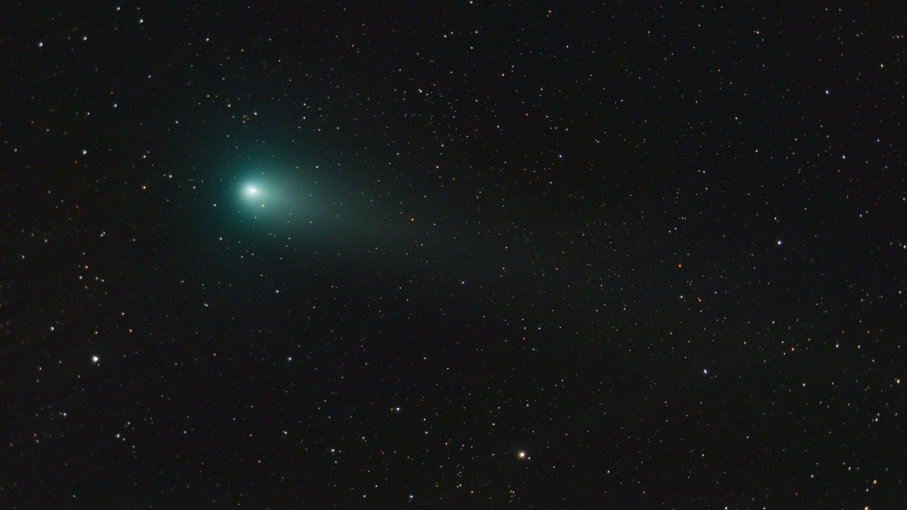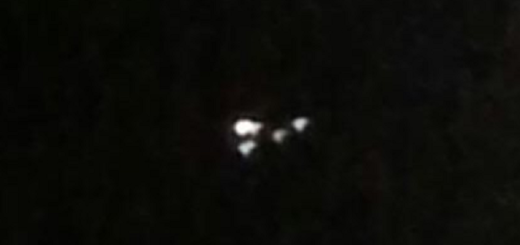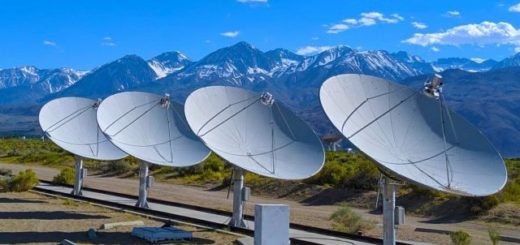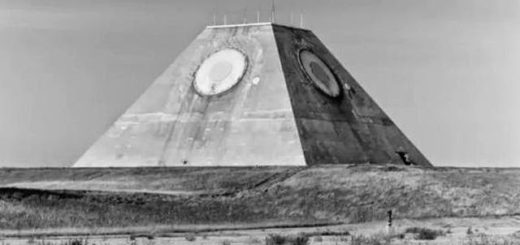Heads Up Stargazers! Two Comets Passing Close to Earth in September

Comet 21P, seen here in a photo taken Aug. 18, 2018 from Moscow, is made up of ice, dust, rocky particles and frozen gasses. ALEXANDER VASENIN, USED UNDER CREATIVE COMMONS CC BY-SA 4.0 LICENSE
Autumn stargazing is a tradition for many people. Nights get longer after the summer solstice and — when the humidity drops — the skies tend to clear up as well. Up in the northern hemisphere, this September’s cosmic ballet will include a bright pair of comets that are now approaching our planet.
Don’t worry, they won’t hit us. And here’s some more good news: You should be able to watch them both without any big, expensive telescopes.
The first comet in our two-part lineup is 21P/Giacobini-Zinner — or “21P” for short. Like all comets, 21P is made of ice, dust, rocky particles and frozen gasses. The solid hunk of matter at its center — a component known as the “nucleus” — has an estimated width of just 1 mile (1.6 kilometers). However, the halo of gas and dust around the nucleus is a very respectable 180,000 miles (290,000 kilometers) in diameter. By the way, 21P doesn’t travel alone: It regularly sheds debris in an annual display that you may know as the Draconid meteor shower.
Each fall, we get a new iteration of this shower when Earth passes through a debris field left behind by 21P. The actual comet completes a new rotation around the sun every 6.52 years. Right now, 21P is on an orbital path that’s bringing it close to Earth. On the night of Sept. 9, 2018, the comet will be only 36 million miles (58 million kilometers) away from our home planet. That gap isn’t much wider than the shortest recorded distances between Earth and Mars.
Astronomers use apparent magnitude to divide stars, planets and other celestial bodies on the basis of visibility. Under this system, brighter objects get lower numbers. Magnitude 6 bodies are the dimmest things in the sky that can be perceived by the naked human eye. Come Sept. 9, good old 21P will have a magnitude of 6.5 or 7. Anyone with a decent pair of binoculars and a cloud-free sky should be able to see it.
But you won’t even need binoculars to view another comet that’s headed our way. The comet 46P/Wirtanen is going to enter a period of visibility in late September, when it will appear at the border of the Fornax and Cetus constellations. At first, this distant object will only be a magnitude 10.5, but on December 16, it’ll be 7.1 million miles (11.5 million kilometers) away and have an estimated magnitude of 3.5.
That is the brightest prediction so far for comet 46P, and for all comet passes for 2018. That means you could spot 46P for several weeks without any help from telescopes or binoculars. What a great way to brighten up the holiday season.



 Creators of mankind
Creators of mankind Description of “Tall white aliens”
Description of “Tall white aliens” Where they came from?
Where they came from? About hostile civilizations
About hostile civilizations The war for the Earth
The war for the Earth “Tall white aliens” about eternal life
“Tall white aliens” about eternal life Video: “Nordic aliens”
Video: “Nordic aliens” Aliens
Aliens Alien encounters
Alien encounters The aliens base
The aliens base UFO
UFO Technology UFO
Technology UFO Underground civilization
Underground civilization Ancient alien artifacts
Ancient alien artifacts Military and UFO
Military and UFO Mysteries and hypotheses
Mysteries and hypotheses Scientific facts
Scientific facts


















